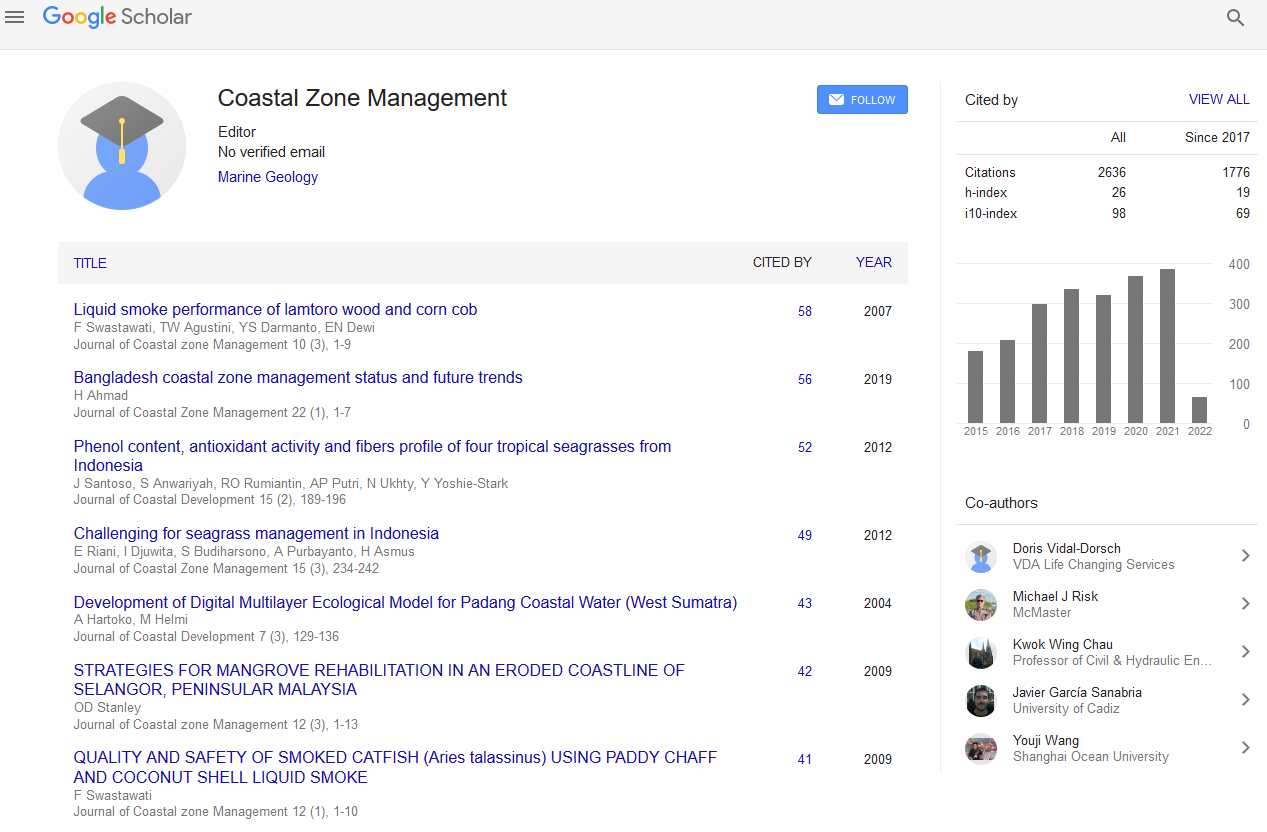Indexed In
- SafetyLit
- RefSeek
- Hamdard University
- EBSCO A-Z
- OCLC- WorldCat
- Publons
Useful Links
Share This Page
Journal Flyer

Open Access Journals
- Agri and Aquaculture
- Biochemistry
- Bioinformatics & Systems Biology
- Business & Management
- Chemistry
- Clinical Sciences
- Engineering
- Food & Nutrition
- General Science
- Genetics & Molecular Biology
- Immunology & Microbiology
- Medical Sciences
- Neuroscience & Psychology
- Nursing & Health Care
- Pharmaceutical Sciences
Abstract
Carbon Mitigation Potential Under Boundary Planataion And Hort-Silvi-Pasture Systems In Kashmir Himaliya
Meraj U Din Dar, K. N Qaisar, T. H. Masoodi, A. H. Mughal and P.A Khan
The present Investigation entitled “Carbon mitigation potential under boundary plantation and Horti-Silvi-Pasture Systems in Kashmir Himalaya” was carried out, during 2015 and 2016. Two years data was recorded and presented in pooled form. The experimental site is located between 34° 12' 59'' N latitude and 74°.46' 18'' E longitude at an altitude between 1600 to 3000 m above mean sea level (msl).The main aim was to assess the carbon mitigation potential of selected agroforestry systems.
Boundary plantation is oldest traditional systems practiced around the paddy fields. Farmers preferred to have the trees on the bunds of the field. This system was practiced by 34.89% (67) farmers in the study area.The boundary plantation is also seen alongside the road and canal/irrigation channels and in the proximity of the agriculture fields to provide multifarious products in the form of fuel, fodder and small timber. Salix alba/Salix fraglis are preferred around the irrigation channels whereas, Populus deltoides, Populus balsamifera, Ulmus villosa, find place on other available lands at different spacings.Oats and mustard are sown during the Rabi season and paddy during kharif season.
Horti-silvi-pasture system practice had poplar and salix system along with some forage species. Apple was dominant fruit tree in this system. This system was practiced by 23.95% (46) farmer in the study are.Farmers preferred grasses like Trifolium repens (white clover), Polygonium hydropiper (water pepper), Trifolium pretense (red clover), Aegilops tauschii (tausch’s goat grass), Amaranthus spinosus (spiny amaranth), Echinochloa crus-galli (cockspur grass), Lolium perenne (ryegrass), Bromus japonicus (japanese brome), Clinopodium umbrosum (shady calamint), Chenopodium album (pig weed), and Avena sativa (wild oats) in addition to multipurpose trees on their farms. The total maximum CO2 mitigation potential under boundary plantation was recorded 62.75 t ha-1 in treatment T1 (Poplar+oats-paddy) followed by 46.16 t ha-1 in treatment T2 (Salix+mustard-paddy). In Horti-silvi-pasture system total maximum CO2 mitigation potential was recorded 133.26 t ha-1 in treatment T1 (Apple+Poplar+Perennial grasses) followed by 66.49 t ha-1 in treatment T2 (Apple+Salix+Poplar+Perennial grasses).
There is a developing interest in the part of various kinds of land use frameworks in settling the air CO2 fixation and diminishing the CO2 discharges or on expanding the carbon sink of ranger service and agroforestry frameworks. Ranger service has been perceived as a way to lessen CO2 outflows just as upgrading carbon sinks. The part of woods (or trees) in carbon cycles is all around perceived and woodlands are an enormous sink of carbon. There is impressive interest to build the carbon stockpiling limit of earthbound vegetation through land-use practices, for example, afforestation, reforestation, and regular recovery of woods, silvicultural frameworks and agroforestry. Agroforestry frameworks are significant given the territory right now under agribusiness, the quantity of individuals who rely upon land for their occupations, and the requirement for coordinating food creation with natural administrations.
Universally, atmosphere arrangements have featured the significance of land use areas in relieving the environmental change. Agribusiness alone records for 10-12% of the absolute worldwide anthropogenic outflows of GHGs with an expected non-CO2 GHG discharge of 5120-6116 MtCO2 eq/yr in 2005. Since farming terrains are frequently seriously overseen, the other numerous occasions to improve agronomic practices, supplement and water the executives, land use practices to fit the land supervisors' destinations of carbon sequestration. the complete carbon sequestration capability of worldwide croplands is about 0.75-1Pg/yr or about half of the 1.6-1.8 Pg/yr lost because of deforestation and other agrarian exercises.
The accentuation of land use frameworks that have higher carbon content than existing plant network can help accomplish net additions in carbon, explicitly and critical expansions in carbon stockpiling can be accomplished by moving from lower biomass land utilizes [e.g. prairies, crop fallows, and so on to tree based frameworks, for example, backwoods, ranch timberlands and agroforestry. Agroforestry gives an extraordinary occasion to join the twin goals of environmental change transformation and relief. In spite of the fact that agroforestry frameworks are not essentially intended for carbon sequestration, there are numerous new examinations that validate the proof that agroforestry frameworks can assume a significant part in putting away carbon in over-the-ground biomass and in soil and in subterranean biomass.
Published Date: 2020-12-21;

